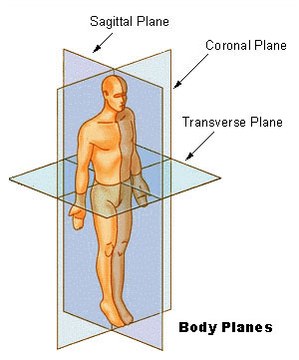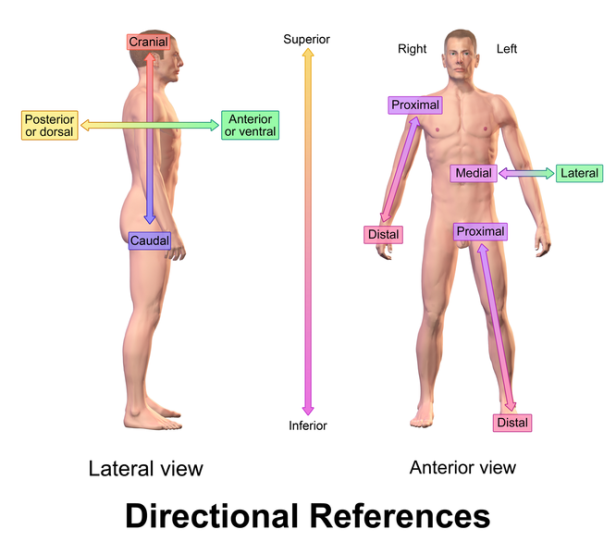If you work on radiology image analysis, you may come across anatomical terms of location in papers or in discussions with clinical collaborators. Here is a quick reference guide with definitions and examples:
| Superior | “Above”
e.g. The head is superior to the chest |
| Inferior | “Below”
e.g. the feet are inferior to the knees |
| Lateral | Away from the vertical center line of the body
e.g. the hand is lateral to the heart |
| Medial | Towards the vertical center line of the body
E.g. the nose is medial to the ear |
| Superficial | On the surface
e.g. the skin is superficial |
| Deep | Inside the body
e.g. the kidneys are deep |
| Anterior | “Front”
e.g. the nose is on the anterior surface of the body |
| Posterior | “Back”
e.g. the spine is on the posterior surface of the body |
| Proximal | Often used in the context of limbs; “proximal” means closer to the shoulder or closer to the hip
e.g. the thigh is proximal and the foot is distal e.g. the shoulder is proximal and the hand is distal |
| Distal | Often used in the context of limbs; “distal” means farther from the shoulder (i.e. closer to the hand) or farther from the hip (i.e. closer to the foot) |
| Transverse plane (see below) | The plane of a belt |
| Sagittal plane (see below) | The plane of a drawn bow |
| Coronal plane (see below) | The plane of headphones |

Anatomical planes: sagittal, coronal, and transverse
Transverse Plane (aka “Axial Plane”): the plane of a belt
Sagittal Plane: The plane that you make with a drawn bow (as in archery. The word “sagittal” comes from the Latin word “sagitta” meaning “arrow”)

Coronal Plane: the plane of headphones


Diagram: Anterior/Posterior, Cranial/Caudal, Proximal/Distal, Medial/Lateral
I hope this reference guide helps the next time you come across anatomical terms of location!

